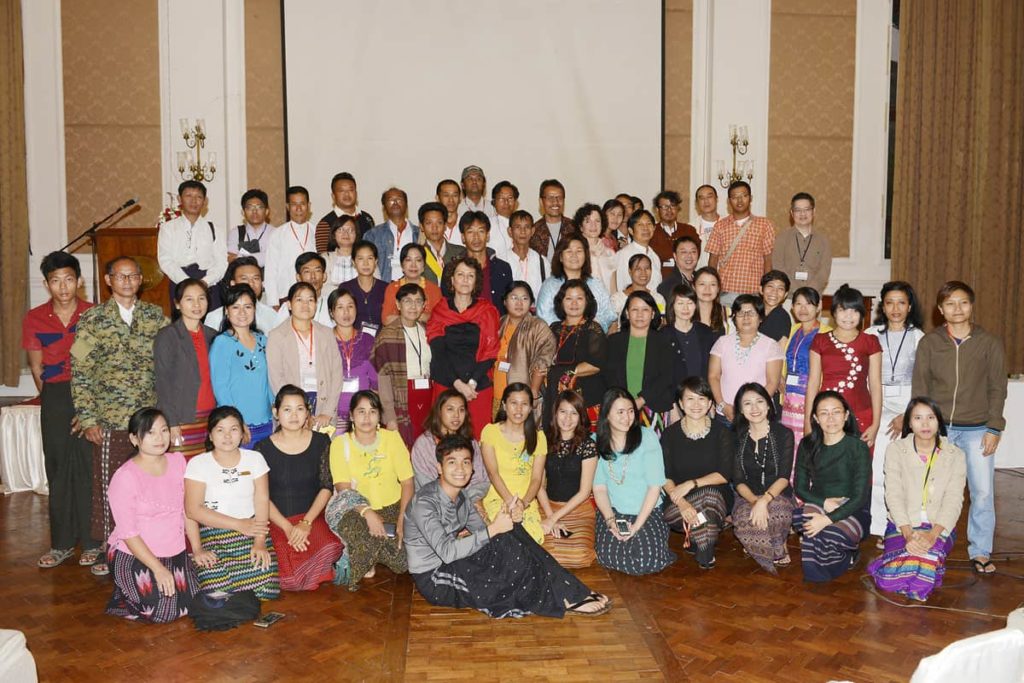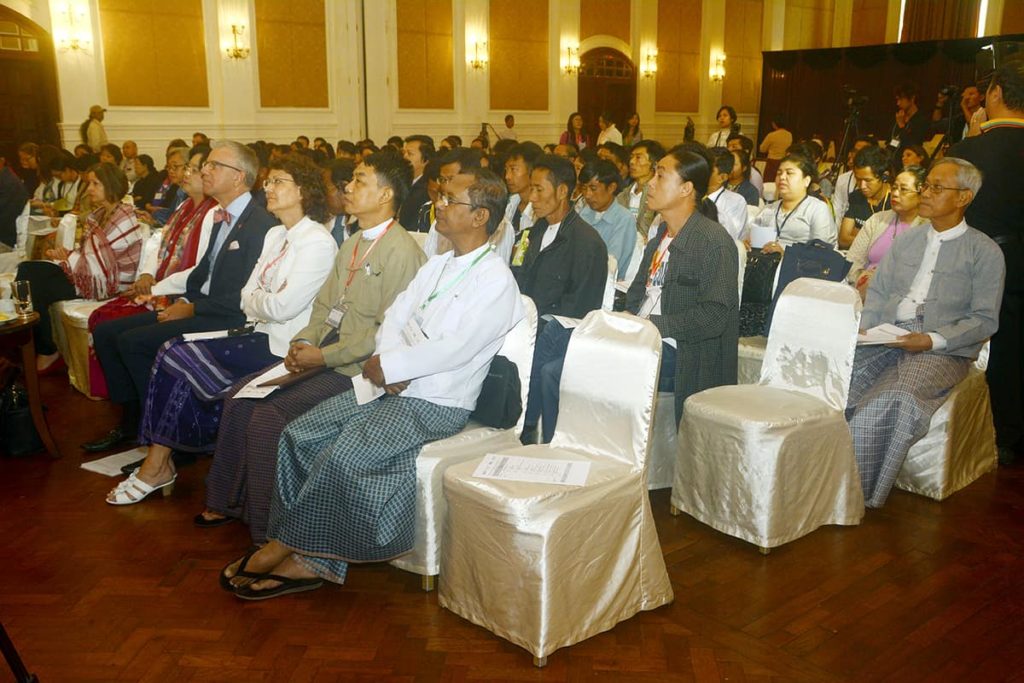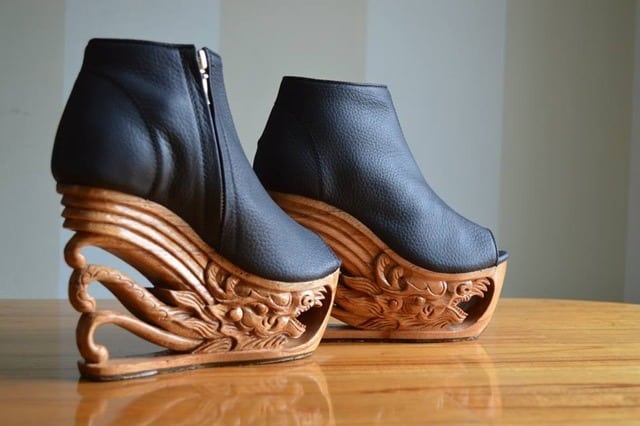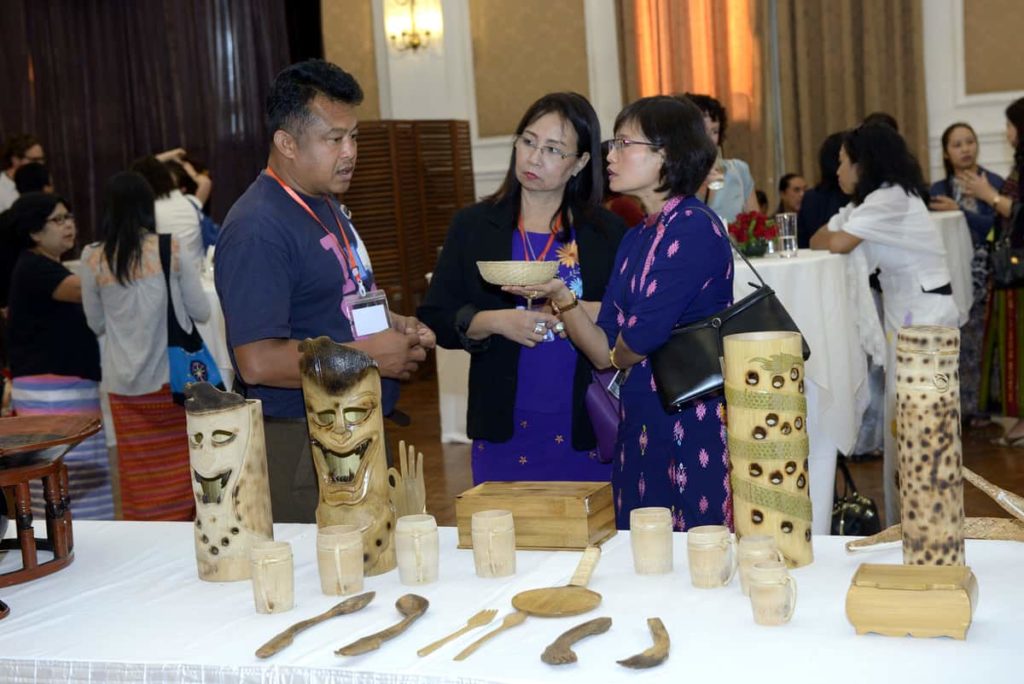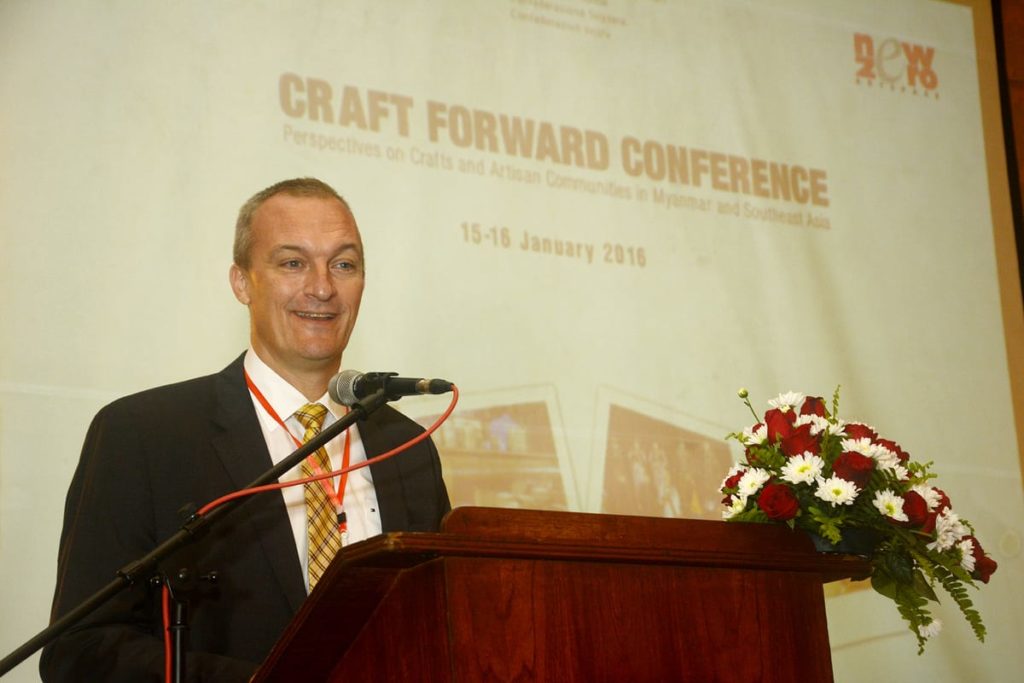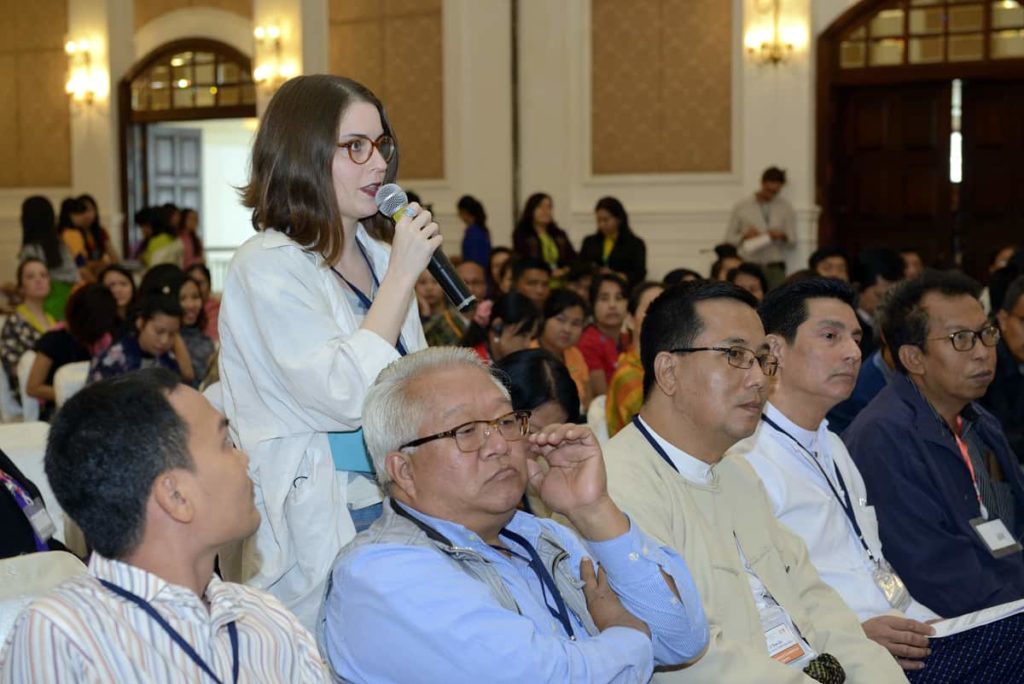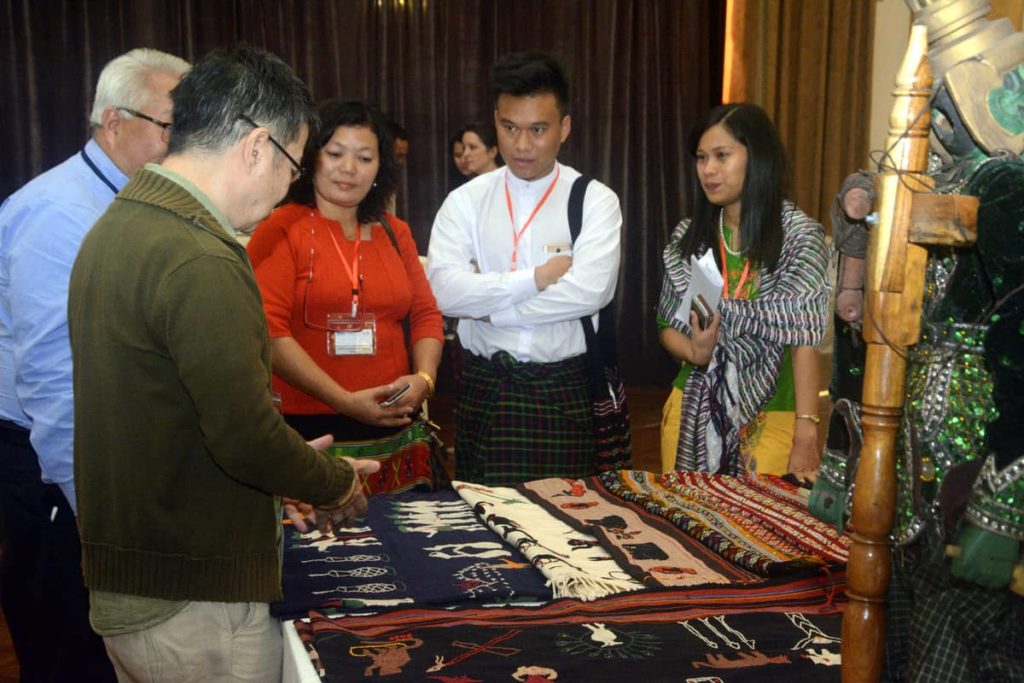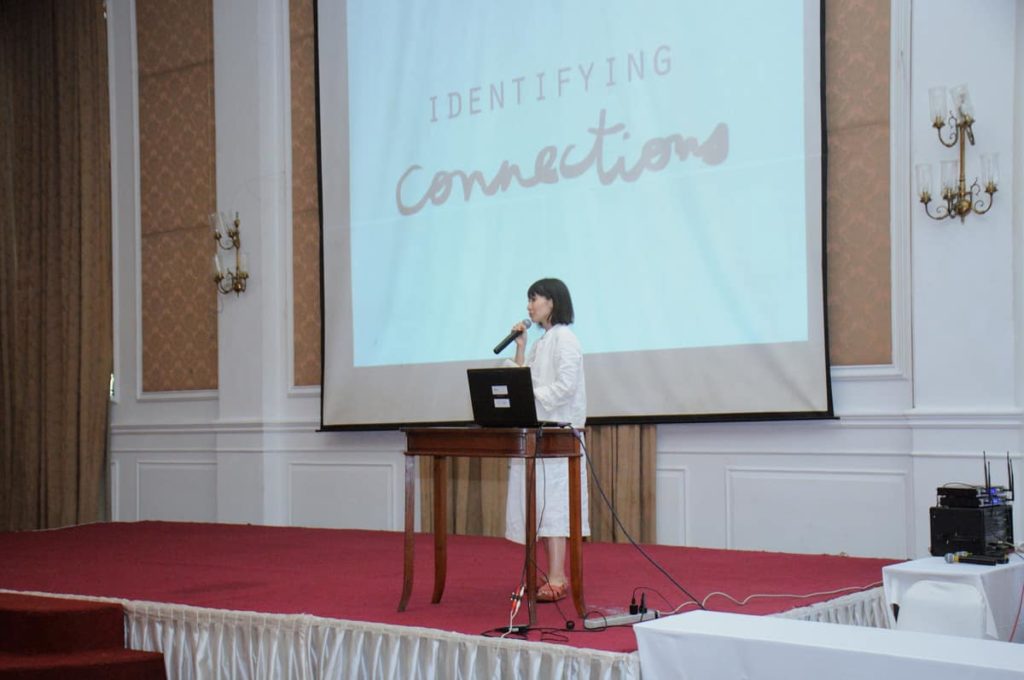Out of the blue, an email arrived with an invitation to speak at a craft conference in Yangon, Burma. I was mildly shocked as I had had no prior contact with the host organization, the British Council, but was elated that my company, Ma Té Sai, had sparked interest in a broader craft context. Five people, spanning careers as educators, consultants, designers, artists, and social entrepreneurs, had been selected from the South East Asia region to exchange ideas with the wider Burmese craft industry in Yangon.
Craft Forward is part of ‘New for Old’, a regional initiative supporting craft development through design by the British Council team in East Asia. It is the first conference of its kind in Myanmar, and stemmed from a 2-year handicraft-focused partnership between the British Council Myanmar, the Swiss Agency for Development and Cooperation and New Zero Art Space.
A few years back, Kevin Mackenzie, Country Director, British Council Myanmar, went on a visit to the Eastern Shan state, where he saw Lahu women, not making and selling Lahu handicraft but making and selling handicraft of the co-habiting ethnic Akha people. Questioning the women, they replied they could not sell their own crafts as the foreigners did not like them, so they copied the Akha crafts. Concerned at how fast traditions may be lost in an opening Burma, Kevin consulted with the local team and the Council developed an initiative to support the handicraft sector. Working with a local partner, New Zero, an art space supporting creative ventures, they have developed a series of workshops, exhibitions and this conference. This initiative incorporates interactions based on exchange of ideas, and processes, a look at resources, revival of traditions, and transitioning these into the new Burma. All is in hope for better livelihoods for the producers. And it was over 40 of these artisans who attended the conference, after three days of design workshops.
Design was a topic visited repeatedly. Many of the local artisans felt they needed more support in technique and in design. This is always a challenge when you are developing products for an international market. Design is not necessarily a learned process and involves an incubation of creativity. Exchanges incubate, but not every artisan will be comfortable with design. To bridge the divide, the local partner in this initiative is New Zero, founded by artist U Aye Ko. Although very much behind the scenes at the conference, his presence was felt, and he is the necessary catalyst to bolster the traditional craftsman on their journey into a more contemporary craft world.
Foremost in terms of challenging design and processes was Singgih Susilo Kartono, Founder, Piranti Works, Indonesia. His work and ideas definitely resonated with the local artisans. He is an award-winning designer, and a philosopher as well. Singgih delighted us with his wooden radio and shared his re-thinking of the village. He designs products that require 5mm precision, small amounts of natural materials, and can be sold for a premium price. He terms this “New Craft”. A manufacturing process that is centered around craftsmanship and uses modern management techniques to ensure each step in production is quality controlled in terms of output as well as material usage. This process is used to make his small function wooden radios, stationary, accessories that are sold worldwide under the magno brand. Stemming from this he has created a philosophy around the village, based on the premise that pre-industry the village was small, local and disconnected, but now post-industry, the village is still small and local but connected. Thus, with information and new skills as input into the village, there is an ability to manage resources, time to hone craftsmanship, and connection to larger markets. He says that now is the time to invest back into the village.
Investing in the village was not only a great idea, but a cost-saving initiative that created a competitive advantage for my company in Luang Prabang, Ma Té Sai. Driven from necessity, village production solved the problem of buying the cloth from the cotton weaving villages of northern Luang Prabang, and sending the cloth to be sewn in Vientiane, a very expensive exercise. Through private funding, I was able to train women to sew in the villages where cloth is woven. It cut our production costs, and also provided home-based employment for young women with children. The design process has been gradual and is heavily based on customer feedback. The raw material, Taileu patterns, hand-woven cotton cloth and natural dyes, primarily indigo, also dictates the design, details from other villages, such as recycled metal buttons made from the UXO metal recycling villages of Xiengkhouang province, add a unique touch.
Another social enterprise represented in Yangon was Fashion4Freedom. Victoria Ho, who is based in Ho Chi Minh, designs for this enterprise that revives traditional Vietnamese crafts, and translates traditional designs into a modern fashion context. A unique product she developed is the dragon shoe. It has a wooden platform, which has been carved by a traditional architectural woodcarver from Hue, the former Vietnamese capital. She took us on the journey of the carver, starting with a more structural heel design, and as he mastered the shape, refining the design to an extremely elegant result. Fashion4Freedom is planning an incubator in Hue, a headquarters where they can develop ideas and design, and work on a larger scale with their crafts people. This is big investment, and their model with high-end output, as well as access to the fashion world (Victoria also heads the Fashion Design course at RMIT University in Ho Chi Minh), combined with savvy funding, is very impressive.
For the Burmese artisans to be able to transition to a new market model, these examples provide hope. All of us in the craft world have to bank on the revival of traditional, hand-made, natural products, but the products must be able to have a voice of their own. Several companies are already paving the way. Yoyamay a family business specializing in Chin textiles, takes the traditional and makes them modern. With so many weavers to support, the co-founder, U Kyin Lam Mang, expressed his concern of not being able to satisfy the market enough with new and viable products. As this was my second visit to his store, first being in 2010, I found the textiles with their quality and unique patterns still very relevant today, and their new bags and cushions contemporary, some, like the small goat cushion, even genial. The Chin patterns resonated with me, many similar to the TaiLeu of Laos, heavily influenced by nature. Another newcomer, Pomelo, brings in craftspeople and with them designs contemporary souvenirs, homewares, from traditional methods and motifs as well as recycling materials. Only three years old, they have established a good foundation through design, retail acumen, and the support of volunteers.
In a country where the issues for development are large and varied, Craft Forward provided a greater understanding of how to make crafts sustainable. Investment is not only needed in the producers themselves, but in the infrastructure (financial policies, vocational training schools, exhibition spaces) supporting craft industries and re-invested to increase awareness and quality with research and development, supporting associations awards and scholarships. Many of the local artisans commented there was little interest in crafts in the communities, particularly from the youth. I was lucky to meet a young Burmese woman who lives in Germany and is contemplating returning. There will be more of these, and as we are seeing in Laos, there is hope they will embrace their culture. The issues the Burmese artisans face are real across South-East Asia, but impact to livelihoods can be made by engaging in new business practices, reaching out for non-government funding, and retaining and reviving traditions, of which Burma is very rich.
Author
 Emi Weir arrived in Luang Prabang 7 years ago from Sydney. In 2010 she co-founded Ma Té Sai, a social enterprise and fair trade store. The name means “where is it from?” in Lao language, and over the years the business has built strong relationships with artisans from many different ethnic groups, and communities around the country, promoting authentic Lao handicraft. The signature range is made from cotton encompassing traditional and modern patterns woven by Taileu women north of Luang Prabang. In a recent project shei raised funds to support women from the Taileu villages to learn to sew, now Ma Té Sai’s cotton range is dyed, woven and sewn in the village. She firmly believes village production is the way forward with investment in people and smart phones. www.matesai.com.
Emi Weir arrived in Luang Prabang 7 years ago from Sydney. In 2010 she co-founded Ma Té Sai, a social enterprise and fair trade store. The name means “where is it from?” in Lao language, and over the years the business has built strong relationships with artisans from many different ethnic groups, and communities around the country, promoting authentic Lao handicraft. The signature range is made from cotton encompassing traditional and modern patterns woven by Taileu women north of Luang Prabang. In a recent project shei raised funds to support women from the Taileu villages to learn to sew, now Ma Té Sai’s cotton range is dyed, woven and sewn in the village. She firmly believes village production is the way forward with investment in people and smart phones. www.matesai.com.


